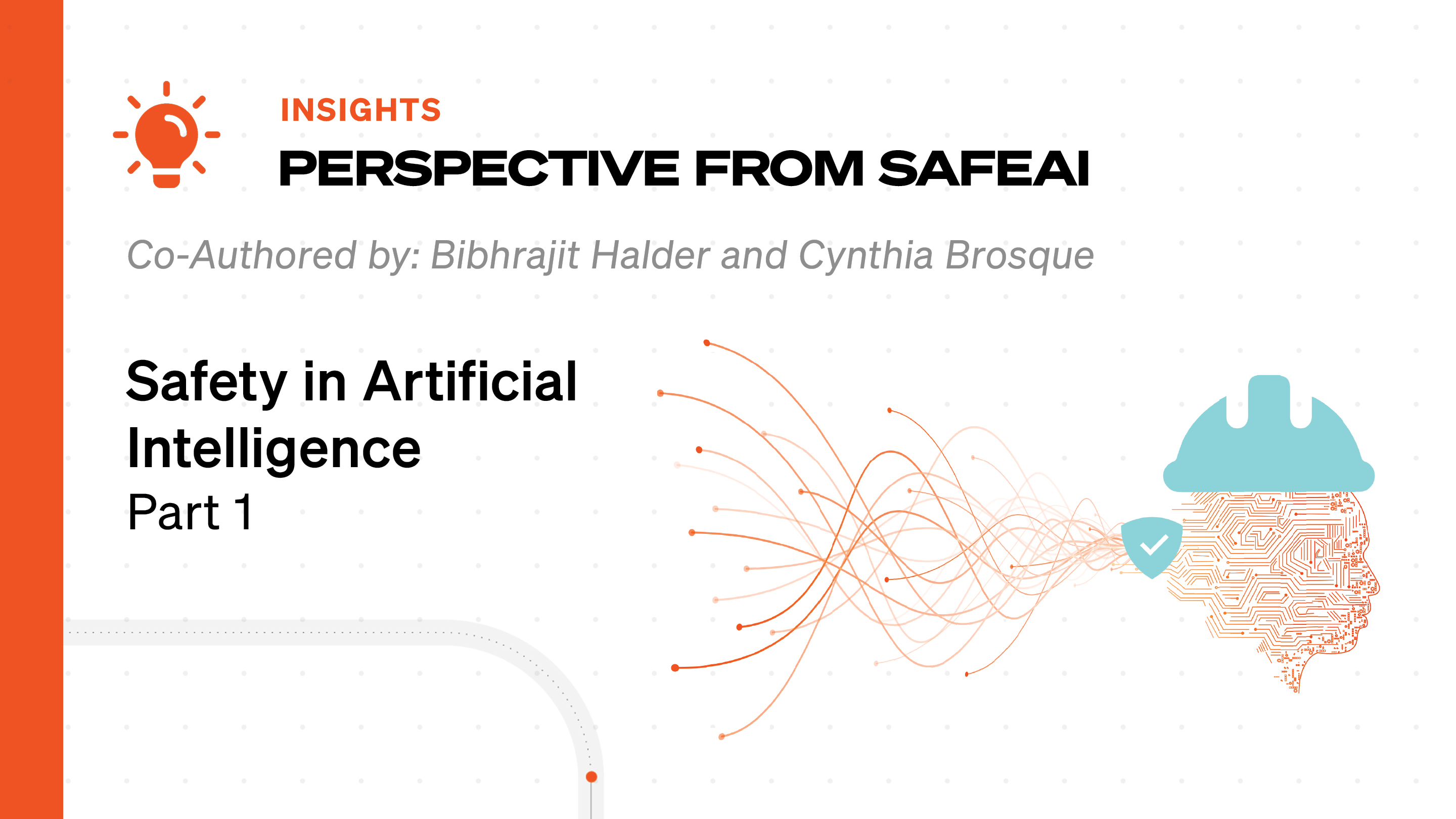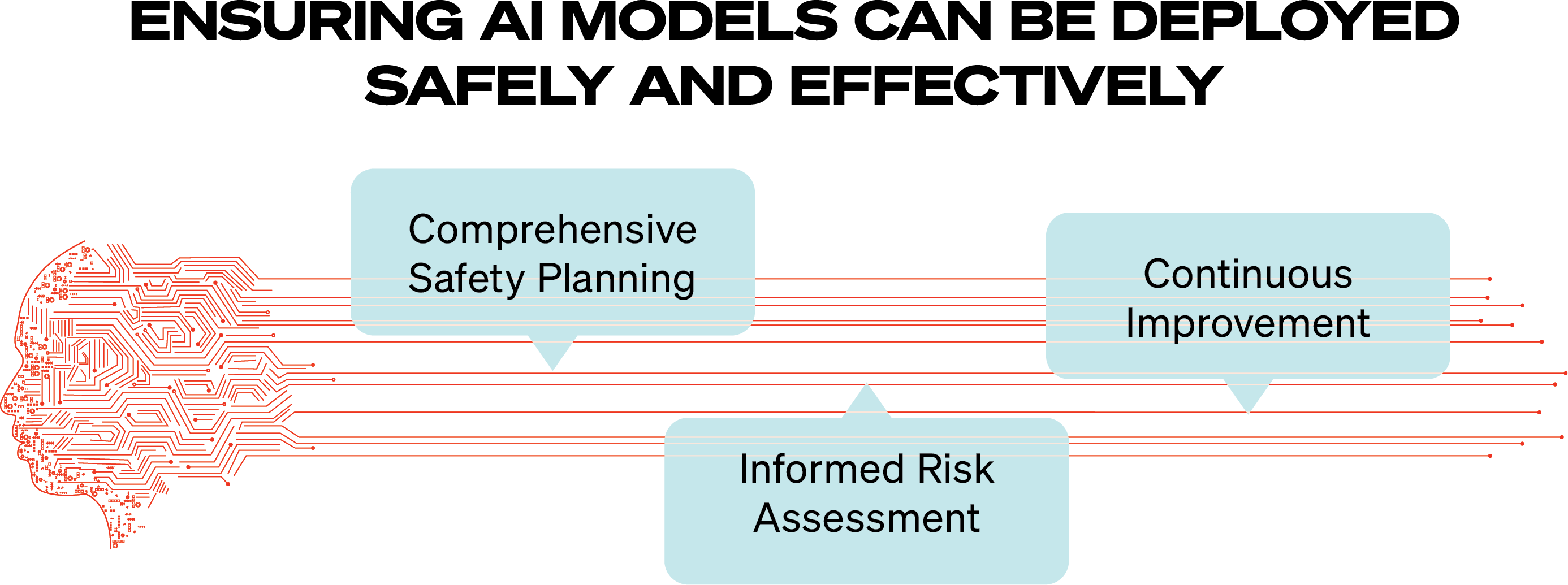
Ensuring Safety in AI: The Importance of the Right Mindset

As we venture deeper into the era of AI, AI safety has emerged as a paramount concern. it’s not just about preventing mishaps or malfunctions; it’s about ensuring that as AI systems become more integrated into our daily lives and industries, they do so safely, reliably, and beneficially for all.
In the ongoing dialogue about AI’s future, opinions vary widely among technology leaders, highlighting the spectrum of attitudes toward AI safety and its implications for society. On one end, we find Elon Musk, who has voiced concerns about the “profound risks to society” posed by unchecked AI development. In contrast, Bill Gates acknowledges the reality of AI risks but maintains a pragmatic stance, believing in our collective capability to manage and mitigate these challenges. Adding a more optimistic note to the conversation, Marc Andreessen asserts that AI holds the promise to “save the world,” focusing on the potential for AI to solve long-standing global challenges.
This diversity of viewpoints underscores the complexity of the AI safety debate. It’s not whether AI presents risks but how we perceive them and the strategies we adopt to navigate them. From caution to optimism, these contrasting positions reflect the broader discourse on AI, suggesting that the path forward is not solely about technological safeguards but also about shaping the collective mindset.
For AI safety, it becomes evident that finding common ground among these perspectives is essential for fostering a future where AI contributes positively to society, mitigating risks while unlocking its transformative potential.
These discussions focus predominantly on instances of AI failures, commonly known as hallucinations. AI hallucinations, characterized by unexpected or erroneous outputs from AI models, have become a topic of interest and concern. Recent incidents, such as those involving major tech companies like Google, have shed light on the complexities of AI systems and the challenges they face in real-world applications.
While it’s undoubtedly important to learn from these failures, this perspective can sometimes overshadow the broader context of AI safety. AI safety is a broad topic with massive implications and impact, extending far beyond the immediate consequences of individual system failures. It encompasses many considerations, from data privacy and security to ethical use and the long-term societal impacts of automation and decision-making processes. It is essential to realize that AI safety is still an open research topic that requires ongoing exploration and understanding.
To lay the groundwork for a deep dive into AI safety, it is crucial first to develop an intuitive understanding of why and how AI models work. This foundational knowledge serves as a stepping stone for addressing safety concerns, allowing us to shift the narrative from a preoccupation with AI failures to a more constructive examination of AI’s capabilities and limitations.
Adopting this mindset enables us to approach AI safety with informed insight rather than reactionary caution. It encourages us to ask pertinent questions: What makes an AI system robust and reliable? Under what conditions do these systems perform optimally, and where are their vulnerabilities?
In essence, grasping why AI models work is the first step toward ensuring they can be deployed safely and effectively. This knowledge forms the basis for a mindset prioritizing comprehensive safety planning, informed risk assessment, and continuous improvement.

The intricacies of AI safety cannot be fully appreciated without considering the context, application domain, and the dependency and severity of AI model outputs. The discussion and planning for AI safety should be influenced by the specific application areas, underscoring the necessity for tailored safety strategies that address each domain’s unique challenges and risks. Whether we’re considering autonomous vehicles, healthcare diagnostics, financial forecasting, or industrial automation, each application carries its own set of expectations, dependencies, and potential consequences should AI systems fail or behave unpredictably.
In essence, the pathway to AI safety is not one-size-fits-all; it is a multifaceted endeavor that demands deep understanding and consideration of the specific contexts and domains in which AI operates. By anchoring our safety strategies in the realities of AI applications, we can forge a more informed, effective, and ethical approach to ensuring the safety of AI systems across the board.
My previous articles discussed how heavy industries like mining can leverage smaller, use case-specific Generative AI models to drive efficiency and innovation. Here, we will continue to use the heavy industries as a specific use case to discuss how a detailed understanding of the domain and use case is critical for any AI safety strategy.
Understanding AI Models and their limitations
Large language models (LLMs) represent a significant advancement in AI capabilities. They enable the generation of coherent and contextually relevant text. These models, such as OpenAI’s GPT series and Google’s BERT, have demonstrated remarkable linguistic prowess in language translation, text generation, and sentiment analysis.
LLM’s impressive performance is derived from techniques like bag-of-words, a popular method for extracting features from data in texts. The word “bag” also refers to the idea that the words do not have any particular structure or order. The model is only focused on whether the word appears in the document. As the vocabulary increases, the representation of the known word vector also increases. Other approaches include a vocabulary of grouped words (tokens) to capture more of the document’s meaning. In any case, the count and frequency of words are assessed as a scoring method.
The LLMs can predict the next word and even generate complete sentences based on vast amounts of textual data previously learned. AI processes known data and identifies patterns to make predictions or generate responses.
However, this process can lead to inaccuracies, especially in ambiguous or novel situations. LLMs lack any understanding of language and context. While they can be very successful, they lack genuine comprehension of language nuances, domain-specific knowledge, or logical reasoning abilities.
This inherent limitation underscores the importance of context and domain knowledge in interpreting and validating AI-generated outputs, especially in critical decision-making scenarios. In these cases, deviations or errors in AI predictions can have profound consequences, so AI solutions require a method to limit the possible outputs and incorporate safety measures and protocols to mitigate the risk of erroneous predictions.
Implementing Safety Measures in AI Models: A Domain-Specific Approach
By understanding the mechanisms behind AI’s decision-making processes, stakeholders can set realistic expectations and implement safeguards to address potential hallucinations. This includes incorporating validation checks, robust testing methodologies, and ongoing monitoring to detect and rectify discrepancies in AI outputs.
AI model safety measures must be tailored to specific domains and applications, considering each context’s unique challenges and requirements. For example, an AI trained in mining will differ from one trained in on-road vehicles.
Consider a scenario where an AI-driven haul truck operates within an open-pit mining site, interpreting sensor data to make operational decisions. If unconstrained, a wrong answer from the model could bring catastrophic consequences in the real-world environment in which the vehicle operates.
Integrating domain-specific knowledge about the environment could add an extra layer of safety assurance to AI-driven systems. By enforcing this compliance layer with the mine safety protocols, such as maximum site speed regulations, we can ensure that the AI model predictions will not violate traffic rules and regulations. These context-specific rules are pivotal in safeguarding personnel, equipment, and the operational environment.
Bounding AI within the mining domain requires a thorough understanding of the mining environment, including the types of equipment used, operational procedures, environmental factors, and shared potential hazards. This domain knowledge forms the foundation upon which AI systems are designed, trained, and deployed.
In addition to this boundary to any possible behavior on the site, it is important to check how confident the model’s prediction is. When we ask ChatGPT a question outside of its dataset, like a news article from last week, the model’s confidence in providing a reasonable answer is extremely low, so it will communicate to the user that it cannot answer the question.
In autonomous driving, sensor data could deviate significantly from the training set or fall outside the model’s domain knowledge. In these cases, we want to be able to score the prediction’s confidence and even outright ignore the AI output when the confidence in obtaining a reasonable answer is low.
Looking Ahead: Establishing Safe AI Models
In safety-critical industries like mining, where operational hazards and risks are inherent, bounding AI within the context and domain knowledge becomes paramount for defining and ensuring safety standards. The unique challenges and complexities of mining operations necessitate a nuanced approach to AI integration. AI systems must operate within well-defined parameters that align with industry-specific safety protocols and regulations.
As AI continues to evolve and integrate into various industries, the imperative for establishing safe and reliable AI models becomes increasingly evident. In the next article, we will explore SafeAI’s approach to AI boundary and domain-specific models.
